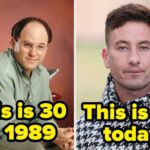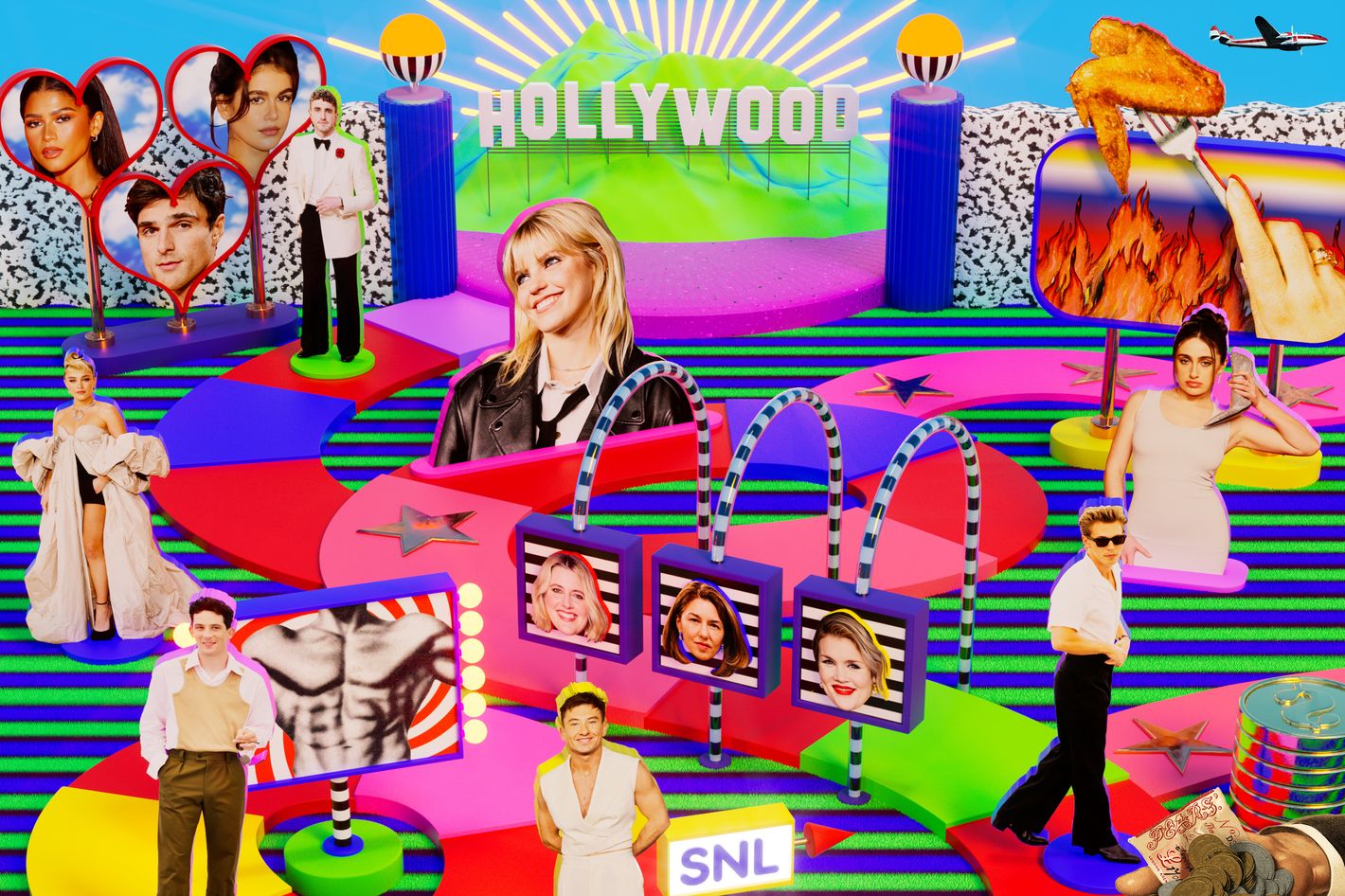
For a while, it was conventional wisdom: Hollywood had lost the ability to make new movie stars. The cultural machinery that once turned actors into icons was broken and seemingly unfixable. Studios had given up on the medium-budget character-driven films that produced the A-listers of previous generations. Instead, they bet the farm on sequels, superheroes, and other franchise IP, which were easier to market but stifling to the humans wearing the unitards. Marvel movies grossed billions at the box office but couldn’t make audiences care about Chris Hemsworth or Tom Holland when they weren’t playing Avengers. Performers like Saoirse Ronan and Lucas Hedges impressed in smaller films but kept the public at arm’s length. Meanwhile, the entire concept of stardom was being cheapened by nobodies from TikTok and reality TV.
But lately, it feels as if the curse has lifted. Suddenly, our screens are overrun with charismatic young people who — dare we say it? — seem an awful lot like stars. From Zendaya to Austin Butler to Margot Robbie, there’s more new high-wattage talent in the industry than there has been in a long time. Some of these actors have already been in hit movies, while others just have that ineffable “It” quality that promises great things to come. Many got their start in streaming TV, which offered meaty roles on platforms with global reach, a perfect incubator for burgeoning star power. Fans on social media took it from there, worshipping these actors into memes.
These celebrities represent a shift in attitude from their predecessors. They’re adventurous in their choices and prefer offbeat movies to traditional dramas; they would rather work with Emerald Fennell and Luca Guadagnino than Tom Hooper or the Russo brothers. They tend to be more progressive in their politics. They know how to get attention on the internet; they’re fun in interviews and will wear practically anything on the red carpet. (Also, as in previous eras, the people who break through are still overwhelmingly white and conventionally attractive.)
In the post-streaming business, where the box office is no longer the most important gauge of success, the stars of today operate under a different set of rules than their predecessors did. So we’ve studied the members of Hollywood’s new class — and polled agents, casting directors, Oscars strategists, and other industry machers — to distill these current realities into the following guide. This is how to be a star in 2024.
Don’t Worry About the Box Office
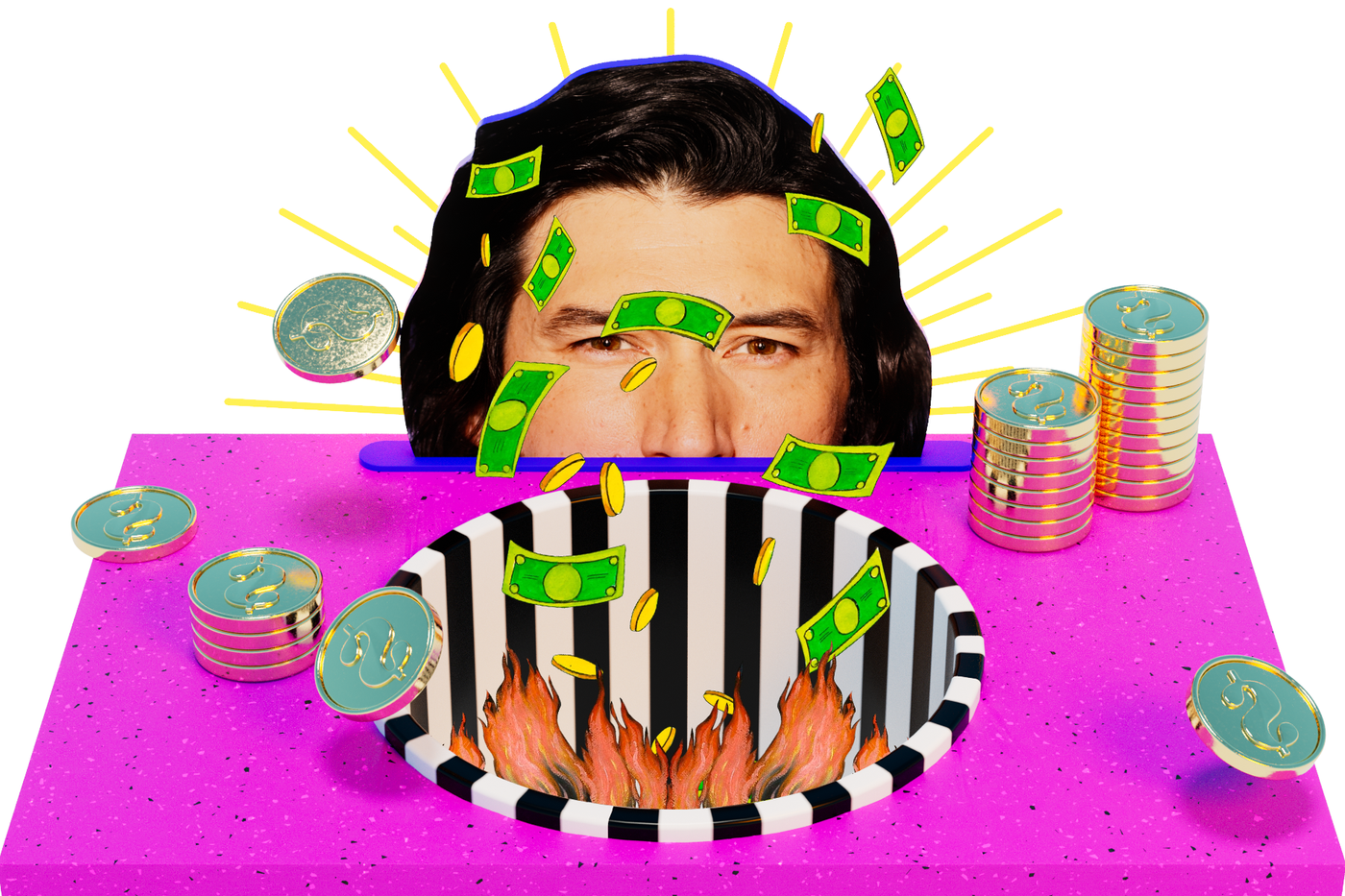
Once upon a time in Hollywood, a movie star’s only job was to turn a profit at the box office; if one failed in this capacity, they might never be heard from again. (Don’t worry, Taylor Kitsch was just sent to live on a farm.) Then came streaming and a pandemic and a third of audiences stopped going to multiplexes. Now, nobody’s selling as many tickets as they used to, and theatrical grosses are no longer the most reliable gauge of an actor’s appeal. While it’s still usually better to be in films that make money, today’s stars can survive, and sometimes even thrive, despite a few bombs. This is why the soft $15 million opening for Zendaya’s Challengers caused so little panic and why Ryan Gosling probably won’t be hurt too much by the $28.5 million debut of The Fall Guy, which cost $125 million to make. Few have benefited more from these lower expectations, though, than Adam Driver.
Driver was in three Star Wars movies that grossed a combined $4.5 billion in theaters, but the Force has not been with him in his other work. Last year, he laid eggs in Michael Mann’s Ferrari, which made just $42 million on a $95 million budget, and the CGI dinosaur thriller 65, which earned only $61 million; those films came on the heels of Ridley Scott’s 2021 medieval epic, The Last Duel, which cost $100 million and grossed a measly $31 million. In another era, to another actor, numbers like these might have been deadly. But nobody has been calling for Driver’s head because it’s not his fault that two-thirds of adults now prefer to watch new movies at home. (65 and The Last Duel were both reportedly hits on streaming, which likely paid off in licensing royalties, digital sales, and subscription fees, among other revenue streams that are increasingly important to movies’ bottom lines.)
Driver is also protected by the fact that top directors can’t stop hiring him. He has starred in auteurist passion projects by Noah Baumbach (White Noise) and Martin Scorsese (Silence), and next he’ll appear in Francis Ford Coppola’s $120 million sci-fi drama Megalopolis. Those who have seen it are skeptical of its commercial prospects. It may lose many millions of dollars. Even if it does, Driver will be fine. —Lane Brown
Leave Your Marvel Movie

Brie Larson’s post-Oscar filmography was swallowed up by Captain Marvel. Tom Holland has been frozen in amber, so he remains perpetually 21 years old. Even an exciting talent like Florence Pugh is in danger of falling into the black hole with next year’s Thunderbolts.
A decade ago, stars took the spandex bargain figuring it was worth giving up the opportunity to do more fulfilling work in exchange for a hefty paycheck and the promise of worldwide fame. But with the MCU in a creative and commercial rut, the calculus has shifted. Timothée Chalamet heeded Leonardo DiCaprio’s advice to avoid hard drugs and superhero movies, and many stars of the new generation have followed his lead. Among today’s budding A-listers, Pugh, Zendaya, and Barry Keoghan are the only ones we can expect to see in a forthcoming superhero movie, and only Pugh’s has a production date. As a sign of how the times have changed, remember that when Terrence Howard didn’t reprise his Iron Man role for the 2010 sequel, he was ridiculed for fumbling the bag; when Ayo Edebiri and Steven Yeun dropped out of Thunderbolts in January, they were celebrated for their savviness. (Their departures were reportedly due to scheduling conflicts.) Or consider the case of Simu Liu. After leading 2021’s Shang-Chi and the Legend of the Ten Rings, Liu took a small role in Barbie, which allowed him to show off his musical-theater skills. Wouldn’t you bet Liu’s eight or so minutes of screen time as a smugly antagonistic Ken will do more for him than whatever he gets up to in Shang-Chi 2? Audiences now consume movies not as a cohesive whole but as a series of moments waiting to be turned into a viral morsel. Spending years chained to one role may no longer be a dream come true. —Nate Jones
Seize the Means of Production
If you’re an actor counting on the industry to provide you with a path toward the A-list, you could be hanging around for a long time. Rather than waiting around to be slotted into the next franchise bet, the savviest rising stars are putting together projects for themselves. The current poster boy for this approach is Glen Powell. His upcoming Hit Man is effectively a sales pitch on behalf of his future stardom. His role as a police consultant posing as a killer for hire is a precise showcase for his strong suit as a screen presence — from his incandescent charisma to his touch of cartoonishness. He should know, given that he co-wrote and co-produced the film, something he’s also doing for the pilot of his comedy series, Chad Powers.
Having a production company used to be a means of flexing your star power, but increasingly it looks key to cementing that power in the first place. Michael B. Jordan stepped up to produce and direct Creed III, reinvigorating the series by giving it an anime-inspired style and providing his character with the kind of nemesis he needed to play off of. The best proof comes from Margot Robbie, who modeled the value of creating the right vehicle for yourself with Barbie. Robbie, via her production company, LuckyChap, was instrumental not just in rescuing the idea of a movie about the iconic Mattel doll from development hell but in bringing Greta Gerwig onboard. She secured a defining role for herself and, just as important, helped craft last year’s biggest hit — which has left her in an excellent position to decide what she wants to appear in next. —Alison Willmore
Star in a Buzzy TV Show First
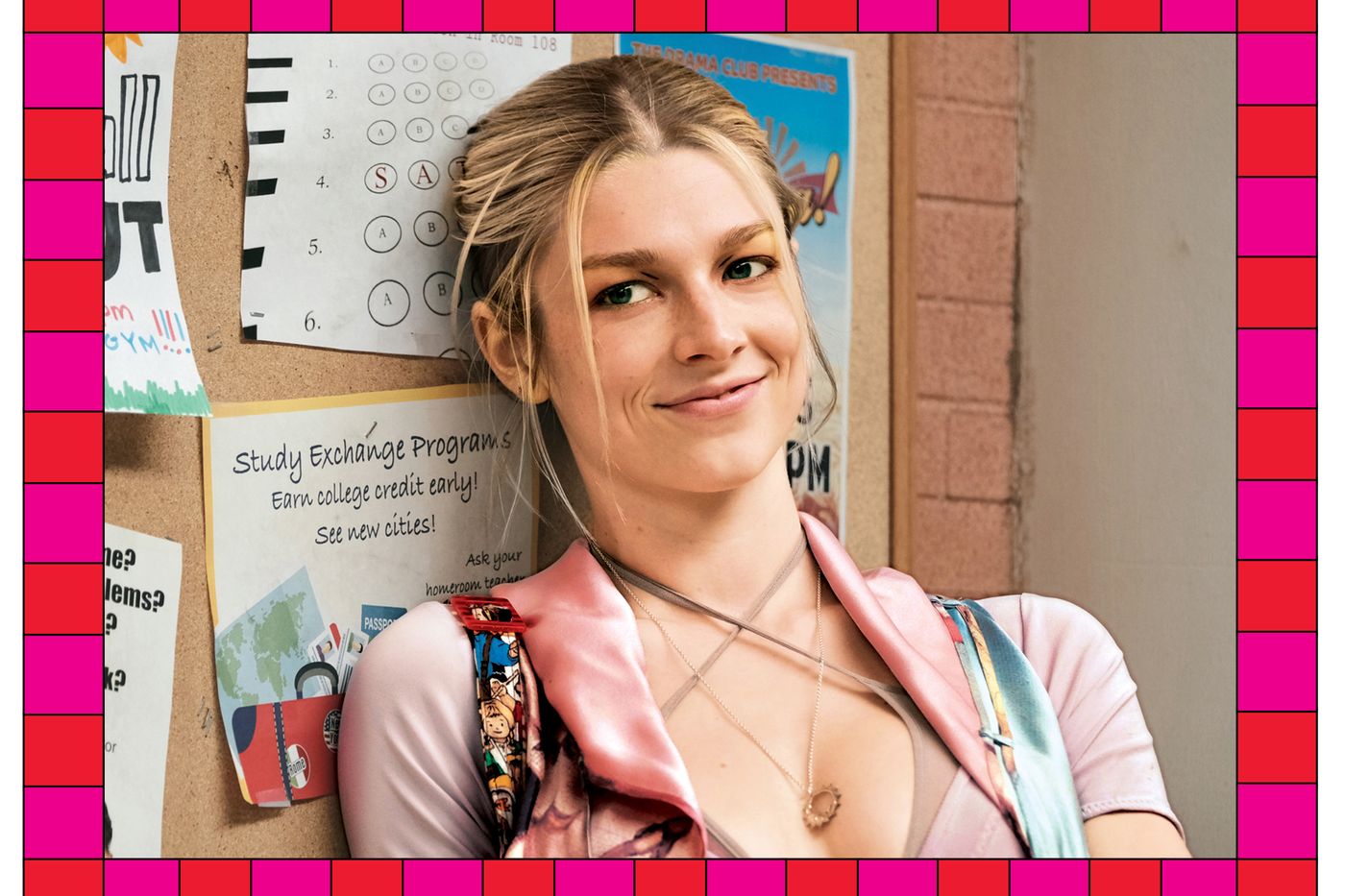
It used to be hard for TV actors to break into movies. For every George Clooney who successfully made the leap, there was an entire cast of Friends that didn’t. Not even the stars of some of the most acclaimed golden-age drama series — James Gandolfini, Jon Hamm, Bryan Cranston — found their footing in film. Lately, TV has become a much better launchpad. The Bear’s Jeremy Allen White is beating auteur directors off with sticks. Zendaya, Sydney Sweeney, and Jacob Elordi from Euphoria starred in the most discussed films of the past year, including Dune: Part Two,Challengers,Anyone But You, and Saltburn. It seems inevitable that Ella Purnell from Yellowjackets and Amazon’s new hit Fallout will soon wind up in a theater near you.
There are a few likely reasons for this shift. For one, viewers now spend more than twice as much time watching television as they do movies. Plus, streaming services have a global reach beyond that of cable and broadcast, which can make the stars of a hit show internationally famous overnight. And the line between TV and movies has blurred. Small-screen shows have adopted the signifiers of cinema — big budgets, dark themes, flashy cinematography. So for today’s up-and-coming stars, hit TV shows are not something one needs to graduate from, and movie roles are not always an automatic promotion. If Sam Levinson ever calls the cast members of Euphoria back for a third season, they’ll probably be glad to be there. —Lane Brown
Eat Chicken On-Camera

Not so long ago, when stars had something to promote, they would have to degrade themselves before print journalists and TV talk-show hosts, answering nosy questions about their personal business. Occasionally, this process would knock loose a revealing crumb of information that made a celebrity seem like a human being. But those days are probably over because now there’s an easier way: In 2024, the most powerful promotional venues are online only, have a viral reach larger than their legacy-media predecessors, and guarantee friendly treatment of their famous guests. Also, for some reason, they often involve eating chicken.
Today, the most important stop on any promo tour is Hot Ones, the YouTube series in which subjects are interviewed over a meal of increasingly spicy wings. Host Sean Evans’s questions are thoughtful but never invasive. (“Have you had a moment in your career where you thought you gave everything to a scene — then had that scene cut from the final edit?”) The show may not teach viewers much about celebrities’ interior lives, but at least there’s a chance we might see snot come out of their nose.
Also popular is Chicken Shop Date, another poultry-centric YouTube show on which heartthrobs like Dominic Fike and Paul Mescal chew on drumsticks while basking in the awkward flattery of comedian Amelia Dimoldenberg. (“You’re always playing such sad characters, but they’re also quite sexy.”) For those who want to be taken more seriously, there are series like Letterboxd’s Four Favorites, in which participants vie for cinephile cred by naming their top films. (Josh O’Connor: Accattone, Ratatouille, Looking for Eric, Happy As Lazzaro.) Or the similar Closet Picks, which invites guests into the Criterion Collection stockroom and lets them fill a shopping bag. (“I can watch Elaine May’s Mikey and Nicky over and over, every day,” claims Charles Melton.) These shows have become the preferred interview medium for young celebrities, which has pushed some old-media competitors to soften their approaches, too. But if a star can’t answer a couple of rude questions every once in a while, it kinda makes them look chicken. —Lane Brown
Go on SNL for the Memes
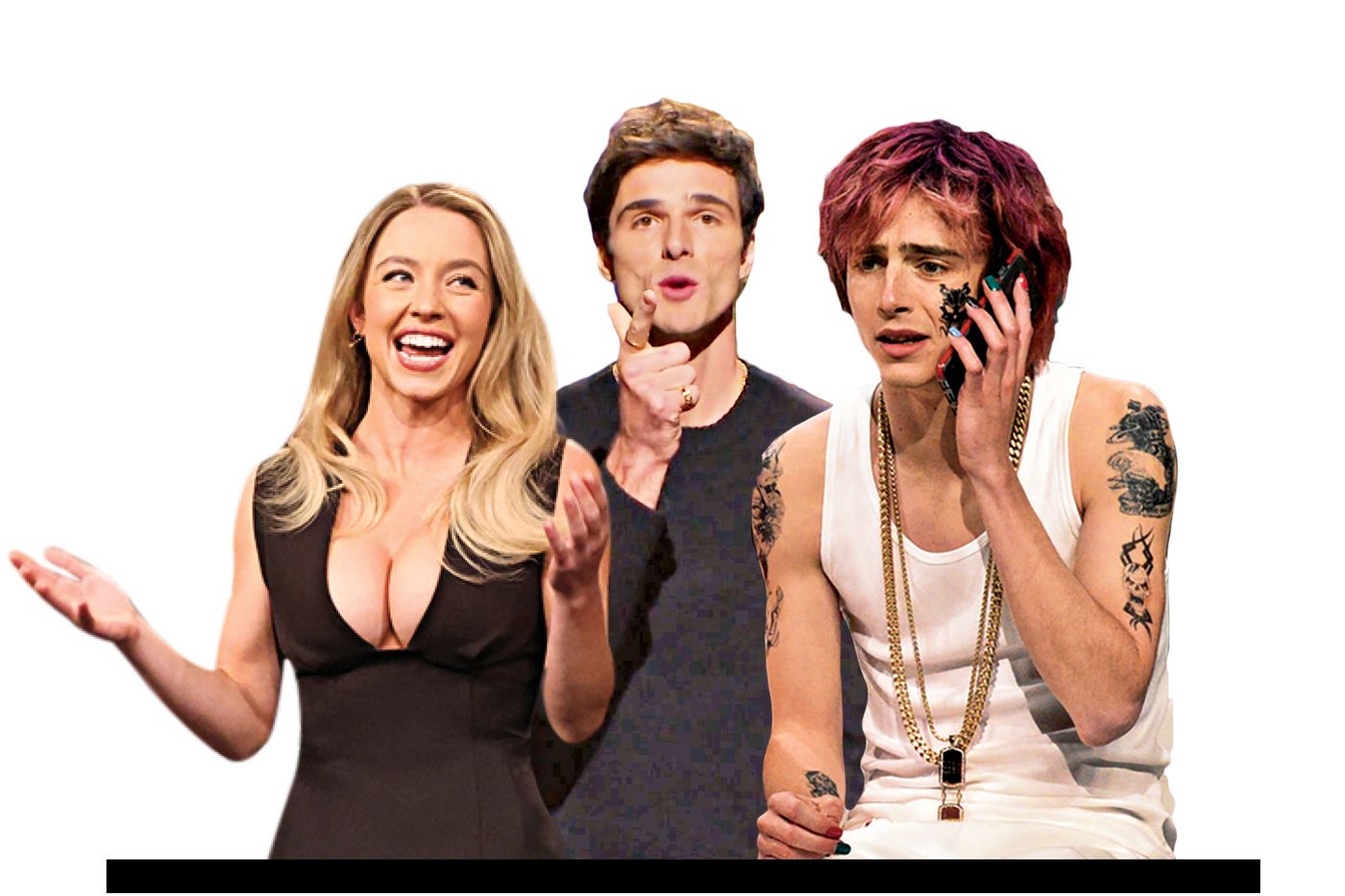
For the past generation of movie stars — Scarlett Johansson, Anne Hathaway, Natalie Portman — proving you could hang at 30 Rock was key to developing a star personae. It also opened these performers up to movie roles by showing off their comedic chops. Going on Saturday Night Live now is less about how funny you are — it’s about giving your stans fodder to create memes.
Take Timothée Chalamet’s SoundCloud-rapper sketch with Pete Davidson, which went on to become a popular sound on TikTok. Or Jacob Elordi’s monologue, during which he told this joke: “So you might know me from Saltburn … If you saw the movie with your parents, I’m sorry. And if you saw the movie with your girlfriend [does a finger-gun point], you’re welcome.” Elordi does nothing to sell the bit, but that didn’t matter to the over 32 million people who watched a TikTok of it, set to moody music with a caption that read, “he did amazing ????.”
No one has understood the new dynamic better than Sydney Sweeney. She reportedly asked the writers to make jokes about her boobs, showing a self-awareness of the fact that they were already a subject of discourse online. She was undercommitted in the live sketches, and yet in the days that followed, millions watched clips of her as a Hooters waitress. Nothing was more discussed than a clip of her wearing a boob-forward dress after it was posted on X with the caption “Wokeness is dead.” Consciously or not, Sweeney had cultivated a fan base of white heterosexual traditionalists who see her as a throwback to a time when famous women were designed to appeal to their gaze. Sweeney had an instinct about how her appearance would stir conversation — and it wasn’t going to be from being funny. —Jesse David Fox
Be Bratty

For decades, the dreaded D-word hung over any actress trying to make a name for herself. Whatever you did, you had to make sure you were never difficult. Remember how Katherine Heigl was shunned for suggesting Knocked Up was “a little sexist”? How dare she impugn the feminist bona fides of a Judd Apatow comedy!
One can’t help but wonder what Heigl thinks when she looks at the new class of stars, whose members get more popular the more they trash their own projects. In an age when a careless remark at a junket can go viral, the actors who resist the mandate to be as boring as possible now read as thrillingly unfiltered. Most notable is Dakota Johnson, a Teflon star who shines brightest when she’s in a total dud like Madame Web. Her performance in the Spider-Man spinoff is a master class in making fun of a movie at the moment you’re starring in it, and she didn’t let up on the press tour, during which she could barely conceal her disdain for the enterprise. This wasn’t great for the film, but it was the most relatable thing Johnson had ever done.
Florence Pugh had a similar DGAF attitude during the leadup to Don’t Worry Darling, which she spent in an apparent cold war with her director, Olivia Wilde, turning the film’s Venice premiere into an public display of opposition. In this case, it worked to the movie’s benefit, as all the drama likely goosed Don’t Worry Darling’s box office upon its release a few weeks later. You could attribute some of this to Schadenfreude, but even stars of massive hits have gotten in on the act. While campaigning for an Emmy for Wednesday, Jenna Ortega threw the show’s writers under the bus—on the eve of the WGA strike, no less—and suffered nary a backlash.
Making her film debut with the Mean Girls musical, Renee Rapp embraced the freedom to be as bratty as she wanted to be. In the course of her Mean Girls press tour, Rapp declared herself “ageist” against millennial women, feuded with the owner of a random bus company, and generally acted completely over everything. “Her lack of media training is outrageous,” Rapp wrote on Instagram about herself, echoing the response of fans who loved it. —Nate Jones
Do Crunches (And Maybe Get Some HGH)
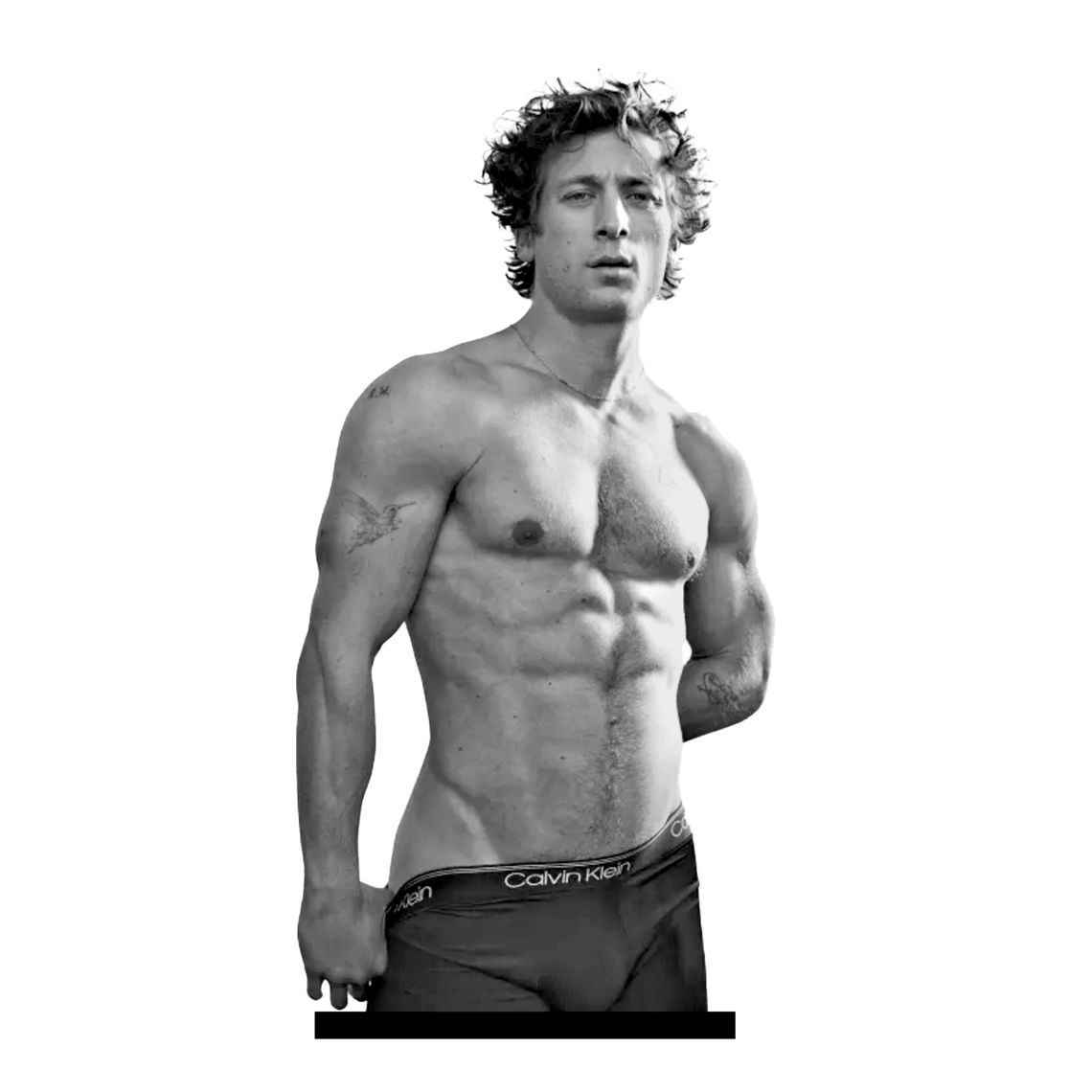
Since the dawn of the superhero era, we have been living in an age of bulging delts, brisket-size quads, and cum gutters that could have been sculpted by Michelangelo himself. But superhero physiques have now become mandatory for even the least heroic of roles. Stars like Jeremy Allen White and Barry Keoghan have been praised for their unconventional good looks, but any sense that we’re living through a ’70s revival in leading-man aesthetics dissipates the moment these guys take off their shirts. Does it make sense that White’s stressed-out chef in The Bear and Keoghan’s awkward loner in Saltburn would be this yoked? Maybe not, but male skin is in, and there’s no better way to build your brand than by building your pecs, as proved by the weeklong thirstfest that greeted the unveiling of White’s Calvin Klein underwear ad in January and the cheeky way Keoghan reprised his Saltburn nude scene for Vanity Fair’s “Hollywood” issue. In the future, we may look back on Obama-era leading men like Michael Cera as the 21st-century equivalent of the silent-film stars who couldn’t hack it in the sound era. They just weren’t built for these times. —Nate Jones
Keep Your Real Teeth
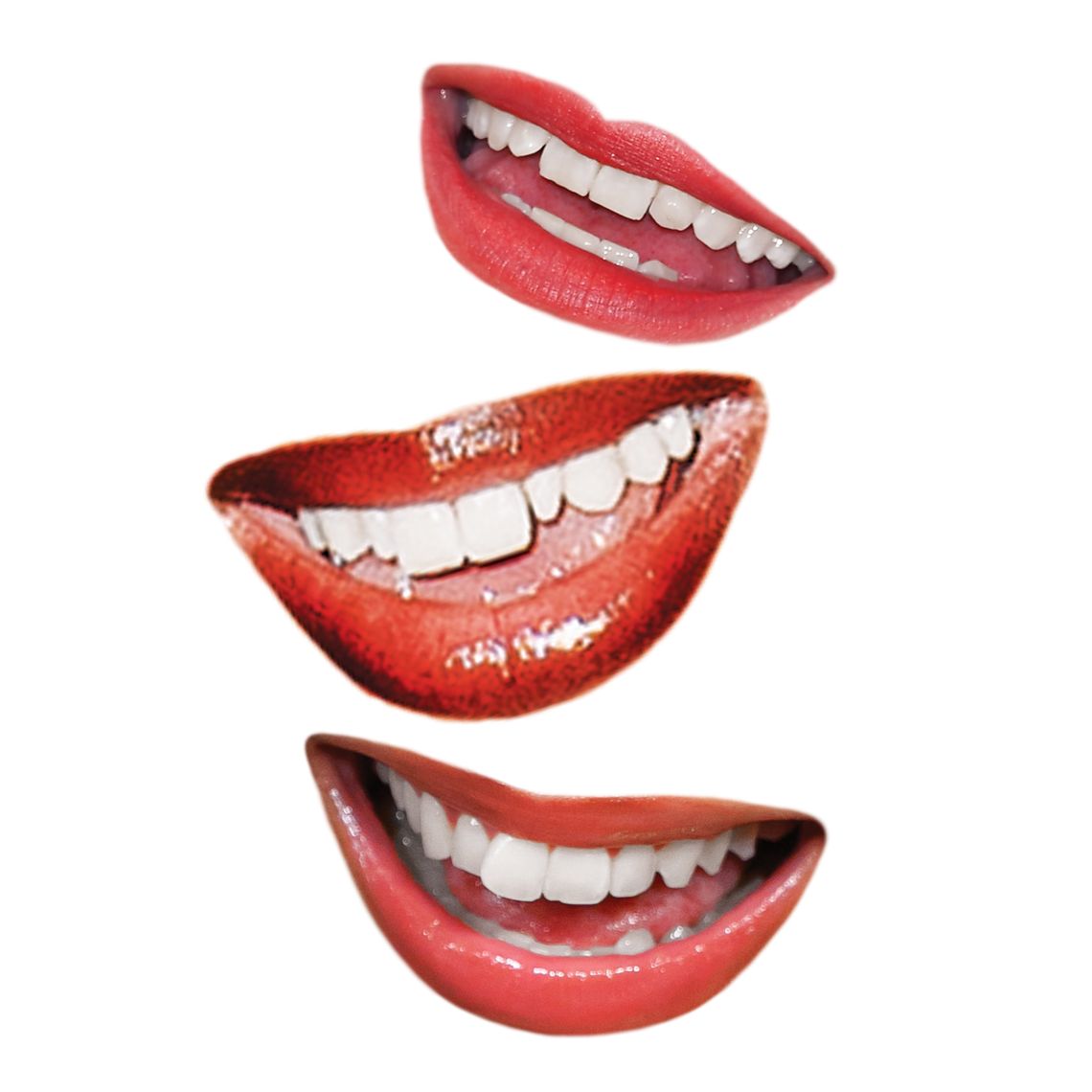
To gaze upon the celebrity face in 2024 is to be confronted with one blinding truth. Or, rather, 28 little ones — look at all those fake teeth! It’s hard not to notice row after row of perfectly white veneers. Emma Stone’s mouth is looking fuller. Miley Cyrus’s teeth at the Grammys pulled the focus from her pair of trophies. And half the cast of SNL appears to have gotten the same massive chompers from 30 Rock’s in-house dentist. On TikTok, cosmetic dentist Dr. Sara Hahn, a.k.a @veneercheck, has amassed over 150,000 followers by analyzing celebrity teeth in such microscopic detail that she was able to pinpoint the date Taylor Swift almost certainly got a fresh set to a five-day span in the fall of 2023.
In this sea of porcelain, it’s all the more momentous when a star retains their original enamel. Take Zendaya, whose charmingly uneven incisors are a testament to the power that comes from not bowing to the caprices of fashion. Same with Industry’s Myha’la, who snagged a Colgate deal on the basis of her teeth, which are small enough to be obviously real. “They do make me look younger,” Myha’la told Nylon. “So I am going to work for a long time.” The godmother of this trend, Kirsten Dunst, resisted industry pressure to change her teeth in the Spider-Man days. Leave the veneers to the strivers; real stars know a seemingly imperfect smile can be the perfect trademark. —Nate Jones
Join This Clique
Today’s young stars mingle within their own circle (which includes the odd pop star and supermodel). They work together, party together, and sometimes date one another, too.
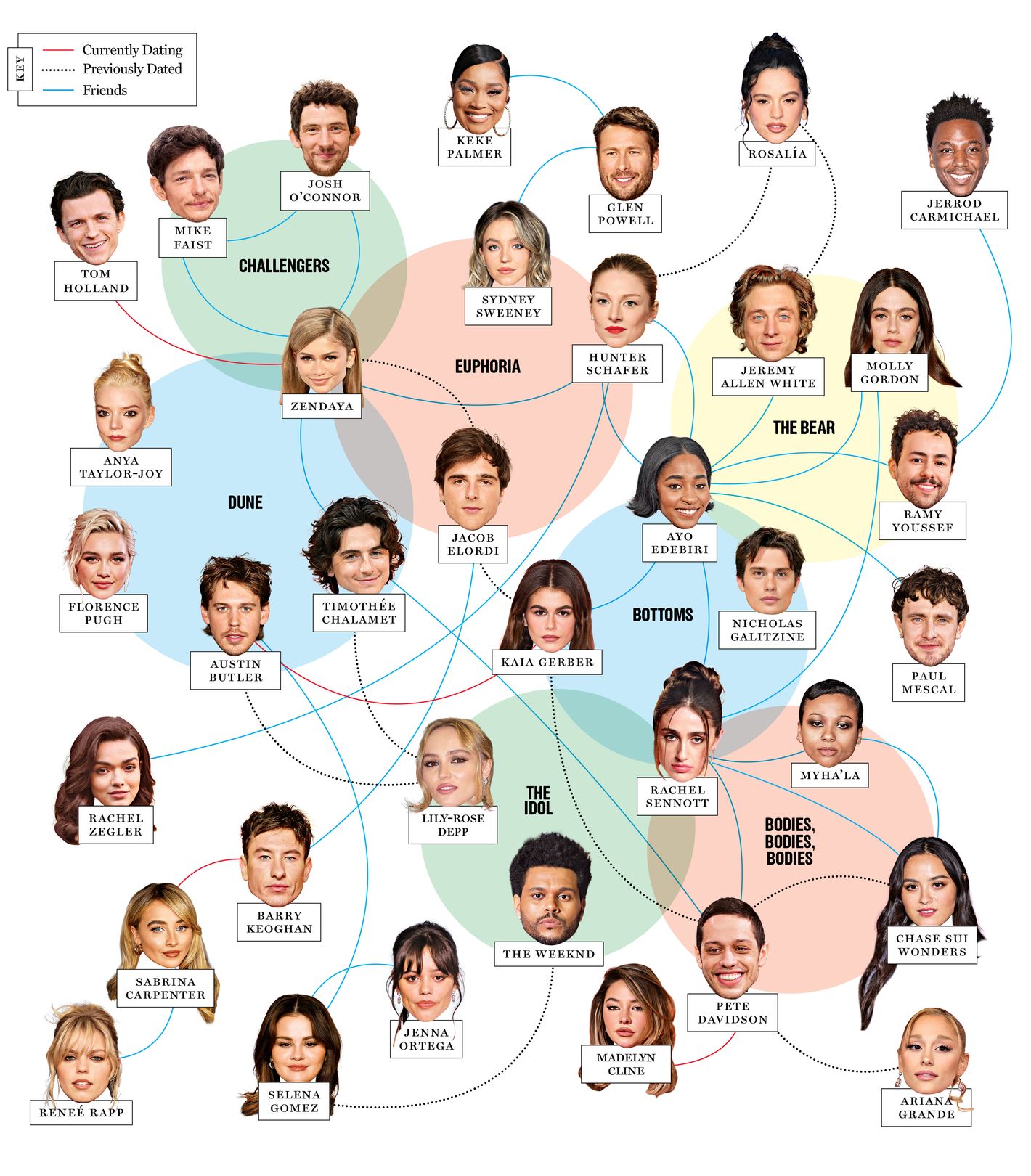
Be a Little Famous to Everybody …
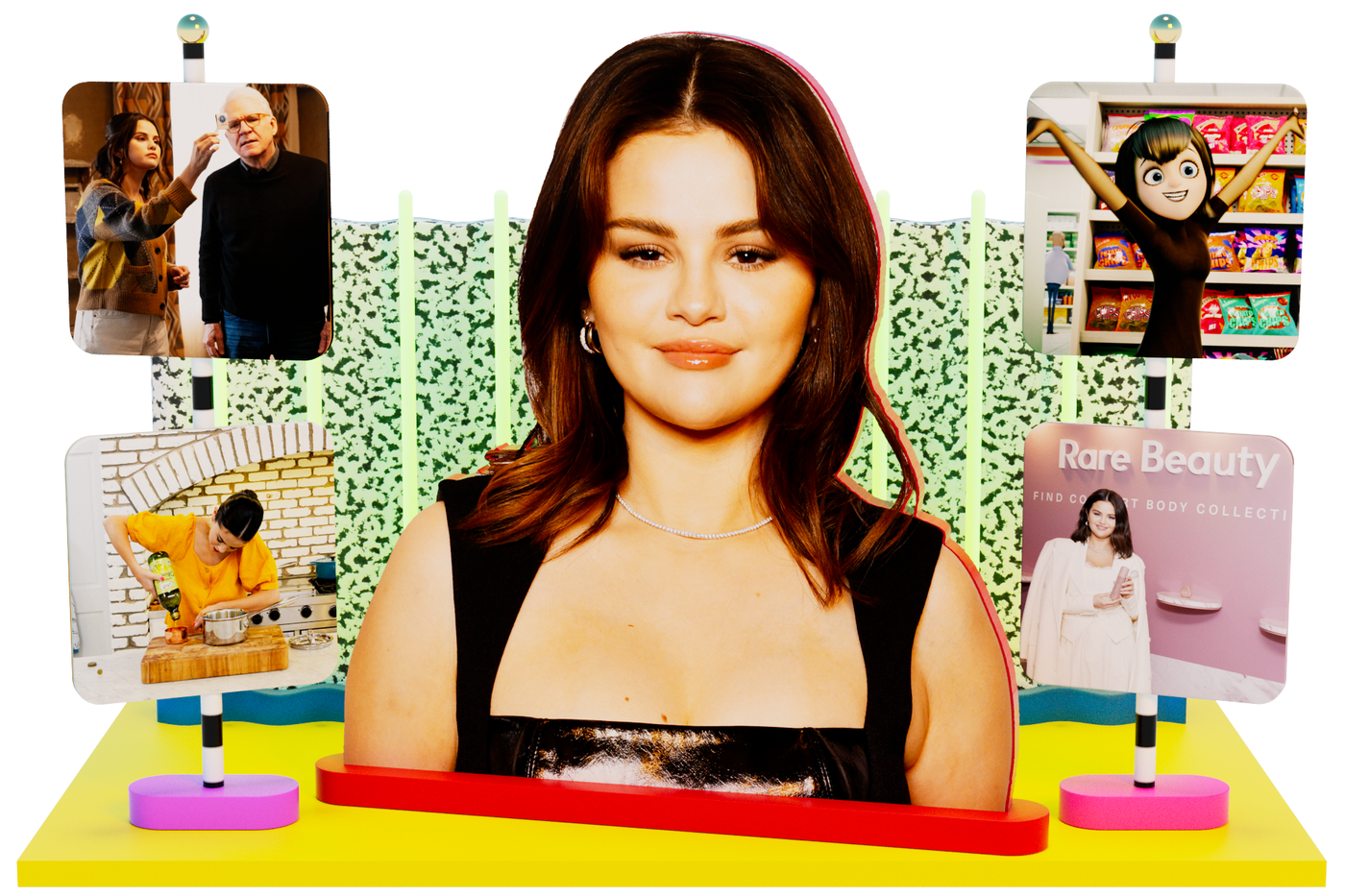
For most of entertainment history, there was only one path to superstardom: You had to get really good at doing one specific thing, then keep doing that thing until it brought you mainstream attention. Now, there are limits to how far doing just one thing can take you. Audiences have sorted themselves into algorithmically programmed media bubbles, none quite alike, which makes widespread cultural penetration difficult. Success in a single area — a hit movie or TV show — is no guarantee of broad awareness. If you want to get really big in 2024, you need a diversified approach. This dynamic has inspired plenty of young stars to become multi-hyphenates, but nobody wields their hyphens better than Selena Gomez. Gomez is extremely well known but not just for one thing and not just to one audience. She’s sort of an actress and kind of a singer, but her greatest skill is her ability to spread herself across a wide range of projects and pursuits, strategically choosing far-flung collaborators (Steve Martin, Gucci Mane) to maximize her reach. Her professional and social networks make Kevin Bacon’s look small, and even your parents have heard of her.
A brief, incomplete recap: Gomez has entertained young millennial viewers on TV’s Barney & Friends and Wizards of Waverly Place, septuagenarians on Hulu’s Only Murders in the Building, and foodies on her HBO Max cooking show, Selena + Chef. She has been in movies directed by Harmony Korine (Spring Breakers) and Jim Jarmusch (The Dead Don’t Die). She’s among the most streamed pop artists in Spotify history, thanks in part to appearances on songs with international stars like Rema, Kygo, and DJ Snake. She’s the founder of a $2 billion cosmetics company (Rare Beauty) and a mental-health charity (Rare Impact Fund). She’s also a tabloid Zelig with reported past romantic entanglements that include Justin Bieber, Nick Jonas, and Zayn Malik.
All of this activity has added up. Gomez is the most popular woman on Instagram with more followers (428 million) than her friend Taylor Swift (283 million). When cameras caught Gomez talking with Swift at January’s Golden Globes, fans speculated she had been gossiping about either Timothée Chalamet and Kylie Jenner or her Only Murders co-stars Martin Short and Meryl Streep. It’s proof of Gomez’s galaxy-bridging reach that either seemed plausible. She’s famous in everybody’s bubble. —Lane Brown
… Or Be Hugely Famous in a Small Niche

Not everyone can be Selena Gomez. It’s also possible, and indeed likely, to find stardom by becoming incredibly famous in a single niche. Call it Substack stardom: If you can monetize a passionate fan base, who needs the A-list?
Through her collaborations with Ti West, Mia Goth has become a big enough star among horror fans to anchor her own franchise. B-listers like Lucy Hale and Camila Mendes have built mini-empires in the streaming world. “She can get a rom-com made within five minutes as long as it’s not a crazy budget,” an agent says of Mendes. “Because she’s proven that she can support them.”
Unless they were devoted viewers of The Idol, most Americans probably don’t know who Rachel Sennott is. But to one specific demographic — women under 30 who are extremely online and not entirely straight — she may as well be Jennifer Lawrence. How much is that worth? Around $12 million — the amount Bodies Bodies Bodies and Bottoms both grossed domestically. Such cool-kid cachet is presumably what landed Sennott a pilot deal with HBO for a comedy she’ll write, star in, and executive-produce in hopes that she can be, if not the Lena Dunham of her generation, then at least a Lena Dunham of a generation. —Nate Jones
Play a Gay Character and Be Gayish IRL
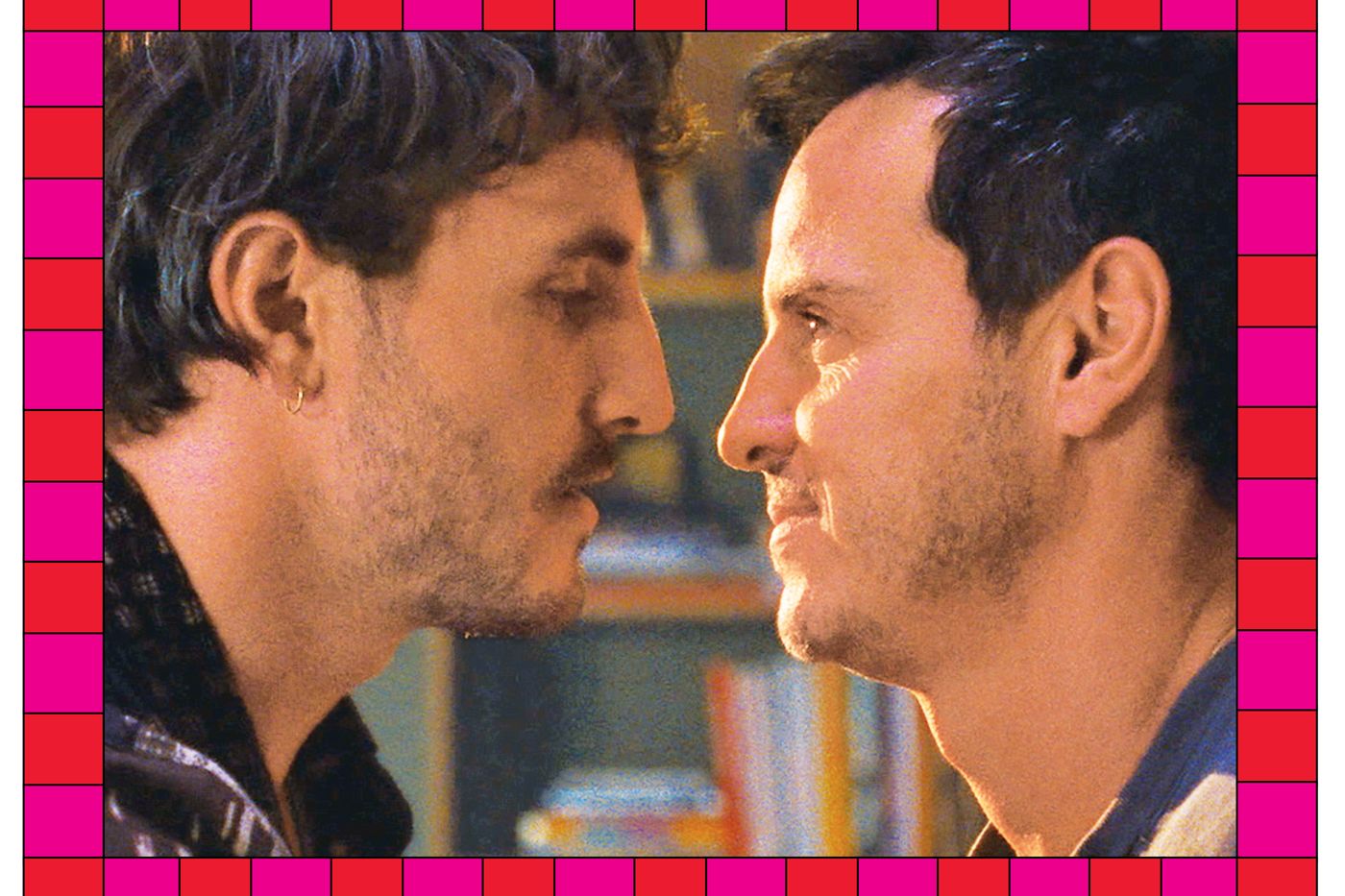
Plenty of young, ostensibly straight stars are going gay for pay these days. You could argue Timothée Chalamet kicked off the trend when he broke out in Call Me by Your Name in 2017, which was part of why the New York Times soon proclaimed it “the age of the twink.” Harry Styles played a closeted cop in My Policeman in 2022. Nicholas Galitzine and Josh O’Connor have had four gay roles apiece, and O’Connor just wrapped a fifth (The History of Sound) alongside Paul Mescal — who played one of the two main gay characters in last year’s All of Us Strangers.
Of course, straight men playing gay men onscreen is nothing new (Philadelphia, Brokeback Mountain, Milk). But it’s one way a lot of new stars have established their brands and gained popularity online, ginning up horniness from the gays and the girls alike. (Even just a hint of queerness, like O’Connor’s MMF love triangle in Challengers, gets fans going.) Sometimes, they get accused of queerbaiting, which led Heartstopper’s Kit Connor to come out as bisexual in 2022 (“congrats for forcing an 18 year old to out himself,” he tweeted). But more often than not, male stars have become adept at dancing around the topic of their own sexuality. To be seen as strictly gay is too restrictive to the marketing fantasy of general availability. But it’s super-helpful, possibly even required, to be seen as “gayish.”
Mescal told reporters he possesses a “proximity” to “queer culture” and “fell in love with Andrew Scott as a human being” on set. Saltburn’s Barry Keoghan, talking about his off-camera bromance with Jacob Elordi (in the movie, Keoghan’s character licks up Elordi’s character’s semen), said, “It ain’t just for the cameras … I think when you’re comfortable with someone, you can be as close as you want, you know what I mean?” When O’Connor was asked about his queer roles by GQ, he said, “Sexuality … is more complicated than we realize.” And last month, while sitting on a panel at the Chicago Comic & Entertainment Expo, actor Darren Criss said, “I have been so culturally queer my whole life. The things in my life that I have tried to emulate … are 100 percent queer as fuck.” In reality, 50 percent queer as fuck will do. —Brock Colyar
Don’t Play It Safe on the Red Carpet …
There has long been a thread in men’s fashion that prioritizes not looking stupid over looking good, a mind-set that will keep you off the worst-dressed lists but is antithetical to interesting style. Yet in the past several years, male stars have seen the benefit in wearing femme, avant-garde clothing. The boost to stardom here is hard to refute: Distinguish yourself as someone unconstrained by traditional gender roles in a way that involves taking good photos in luxury clothes. There’s Morgan Spector in a Thom Browne sweater-vest, no undershirt, arm tattoos on display, or Colman Domingo in volumes of crisp, architectural suiting. Like style in general, it doesn’t work if you don’t mean it. Stars who occasionally step out in a sheer blouse but otherwise stick to jeans (Jacob Elordi, Simu Liu) don’t benefit from a fashion-clout boost. The inverse is also true; stars whose style is questionably successful can still draw attention for it. Take Barry Keoghan with his red-carpet looks that seemed, for many observers, yanked from the closets of their toxic lesbian exes. Even when it doesn’t land, it can still feel like an actual person’s taste. —Erin Schwartz
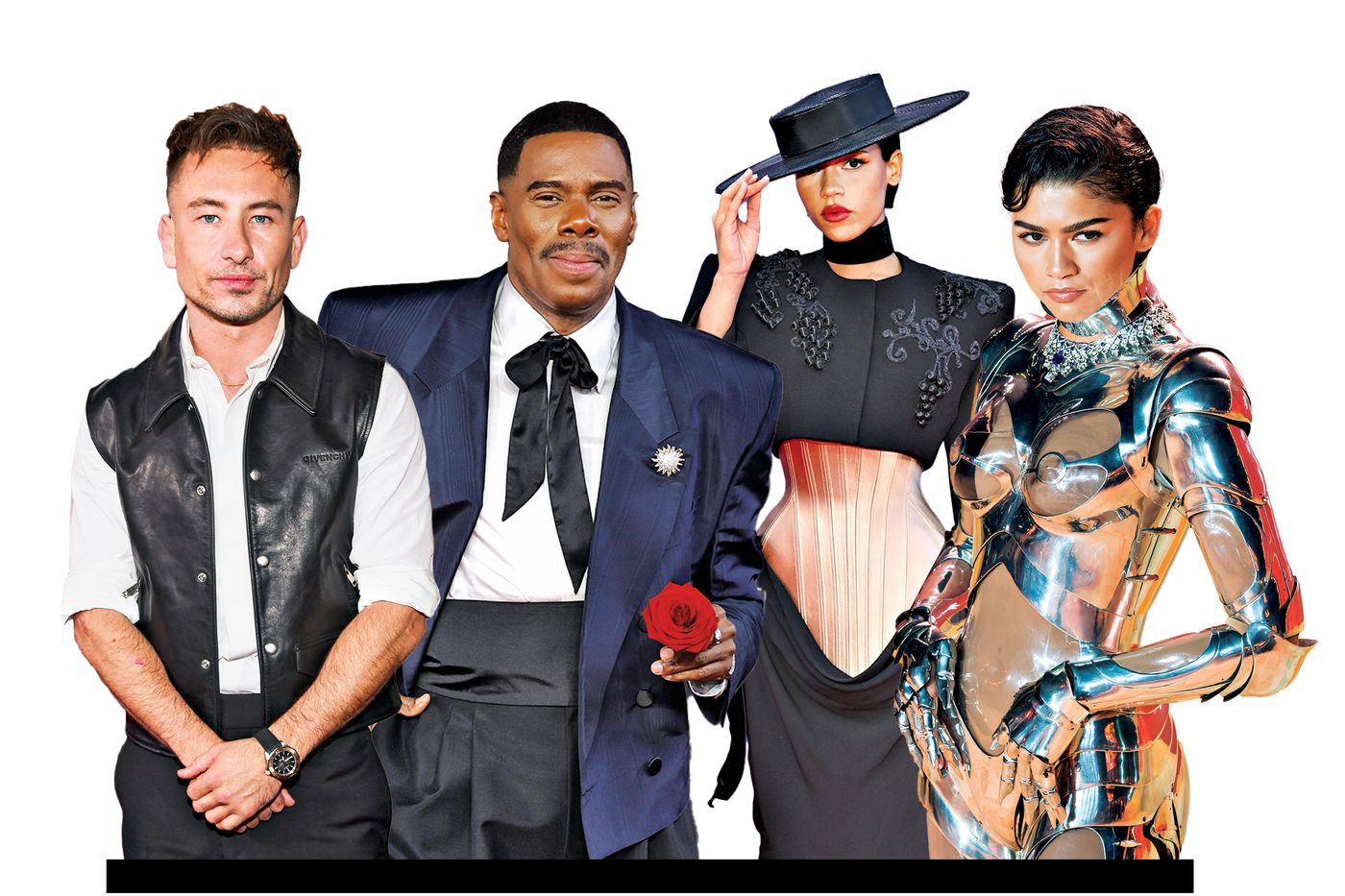
… Or Dress on Theme for Your Movie
Since the beginning of Hollywood, actresses have used their off-screen style to shore up, complicate, and extend their stardom. Think of Marlene Dietrich’s androgynous, sometimes masculine-inflected dressing, with suits and hats cocked just so to reveal one lifted eyebrow. But up-and-coming actresses are adding new dimensions to this lineage. Stars are more brands than personae these days, which makes their stylists and commercial partnerships important to their visibility. There is a coterie of younger actresses who excel at thematically evoking both their own brand and the film they’re touting on the press circuit.
For the slippery, sexy, queer neo-noir Love Lies Bleeding, Kristen Stewart’s team embraced a dark, reimagined vision of the femme fatale. On The Late Show With Stephen Colbert, Stewart wore a Mônot slinky beaded top and skirt with strappy heels over knee high stockings. All in an inky black. The most successful stars understand that to properly wear an outfit, you have to embody it; you can’t let it own you. Stewart imbued the look with a queer, boundary-pushing sensuality, further solidifying her as a gay icon. And consider Taylor Russell, who used the promotion cycle for her 2022 film, Bones and All — a love story about cannibals — to establish herself with the help of her stylist, Ryan Hastings. At the BFI London Film Festival, she wore Schiaparelli: a wide-brimmed hat slightly off to the side, a cream-colored corset, and a black broad-shouldered cropped jacket. The whole look had a fierce sensuality that tonally matched the film without being too on the nose.
But no star today owns the red carpet better than Zendaya. With stylist Law Roach, she has created a series of iconic looks that have bolstered her career. The vintage Thierry Mugler robot suit she wore for the Dune: Part Two red carpet — inspired by the Maschinenmensch in the 1927 film Metropolis — is the standout. By nodding to the classic movie, as well as to the science-fiction element of her own film, Zendaya and Roach communicate a sense of superiority — this is fashion that says, “No one else is on my level.” And it wouldn’t work so well if Zendaya didn’t know how to wear it. On-screen, she has yet to portray the grown-ass sexiness and energy she brings to the press circuit. When she’s on a red carpet, she comes to life, demonstrating a cunning understanding of sculptural posing, saucy charm, and what it takes to channel the energy of the film she’s promoting. In doing so, she’s become an auteur of image-making on the red carpet. —Angelica Jade Bastién
Work With Female Directors …
In 2019, when Me Too was refracting attention to other imbalances in Hollywood, writer Dean Van Nguyen went viral with a thread listing the big-name actors who had never worked with a woman director — stars like Tom Cruise, Matt Damon, and Will Smith. For the new crop of leading-man contenders, this hasn’t been a problem. Actors such as Paul Mescal and Jacob Elordi have proved that working with female auteurs can be a way to demonstrate how much more enlightened they are than their older peers.
Normal People might have introduced Mescal to the world, but he owes his big-screen breakthrough to first-time feature director Charlotte Wells, whose delicate, devastating Aftersun allowed Mescal to sear himself into the memories of everyone who saw it with his performance as a young dad trying to hide his depression from his daughter while on holiday. In fact, half of the six features the Irish actor has made were directed by women. Elordi may not be anywhere near that ratio yet, but last year’s combo of Priscilla (Sofia Coppola) and Saltburn (Emerald Fennell) established him as a compelling recipient of the female gaze. And Josh O’Connor wrote a letter to director Alice Rohrwacher saying he would love to work with her, which he eventually did in La Chimera as a grieving, alluringly dirty hunk. Whether the result is a hit or not, collaborating with a rising female filmmaker can up the goodwill for an actor among fans by demonstrating his readiness to serve a woman’s creative vision. —Alison Willmore
… Or These Five Male Directors
Two directors sit at the top of many young actors’ wish lists: “It’s Denis Villeneuve and Chris Nolan,” says an agent. Their films satisfy on artistic and commercial grounds, and they’re the rare auteurs open to casting people under 35. (Martin Scorsese is a dream, but he can’t really be pitched actors.) In the tier below, you’ll find art-house Europeans Luca Guadagnino and Yorgos Lanthimos, who can turn their stars into the toast of Film Twitter. And working with Jordan Peele has done wonders for Daniel Kaluuya. For the right filmmaker, an actor can never be too needy. “If they’re smart, they’re chasing stuff,” says the agent. “Even if they’re in a position where they don’t need to be chasing anymore.” —Nate Jones
Always Be Posting (But Get Off Twitter)

Ayo Edebiri used to tweet. So did Bowen Yang, Rachel Sennott, and Barry Keoghan. A decade ago the platform was the key to a number of celebrity personas. Some even got their start there, where they would build their brand through self-aware jokes and pop culture commentary. But in the last five years, the platform has faded into the background and become more of a liability for an actor on the cusp of stardom. While a lucky fan may still get QTed by Keke Palmer, the days of reaching movie stars by Twitter replies are all but over. Indeed, two weeks before their first wide-release film, Bottoms, was released, Edebiri and Sennott deleted their Twitter accounts.
Logging off Twitter doesn’t mean logging off forever. For stars these days, the goal is simply to appear as if they’re everywhere online, even if they’re not. Florence Pugh spent her pandemic days cooking on Instagram Live, chopping and sautéing to her heart’s content, and even as she retreats to editorial-photo-shoot sharing and scarce posting, her cooking videos remain accessible and present, pinned to her Instagram profile so you know where to find her. Sydney Sweeney’s feeds are largely promotional — Laneige spon-con here, magazine cover there. She’s quick to correct *rumors* should an online story start to get out of hand. Authenticity can help, but the type of content celebrities post matters far less than you’d think. Long gone are the days of sponsored posts signaling sellouts, according to Marc Karzen of RelishMix, which analyzes social media performance prior to film releases and helps studios make tactical adjustments. “Actors used to not do commercials,” Karzen said, “and now they all do.” Celebs like Sweeney and Zendaya (and their social-media managers) populate their Instagram feeds with ads alongside behind-the-scenes footage from their movies; their fans aren’t fazed by that whiplash. Zendaya’s comments section is full of “brilliance” and “mother!” whether she’s shilling for Bulgari or sharing on-set pics from Challengers. Fans just want to see their favorite celebs, and they want to see them everywhere, if they’re paid to be there or not. —Fran Hoepfner
Take the Weird Movie …
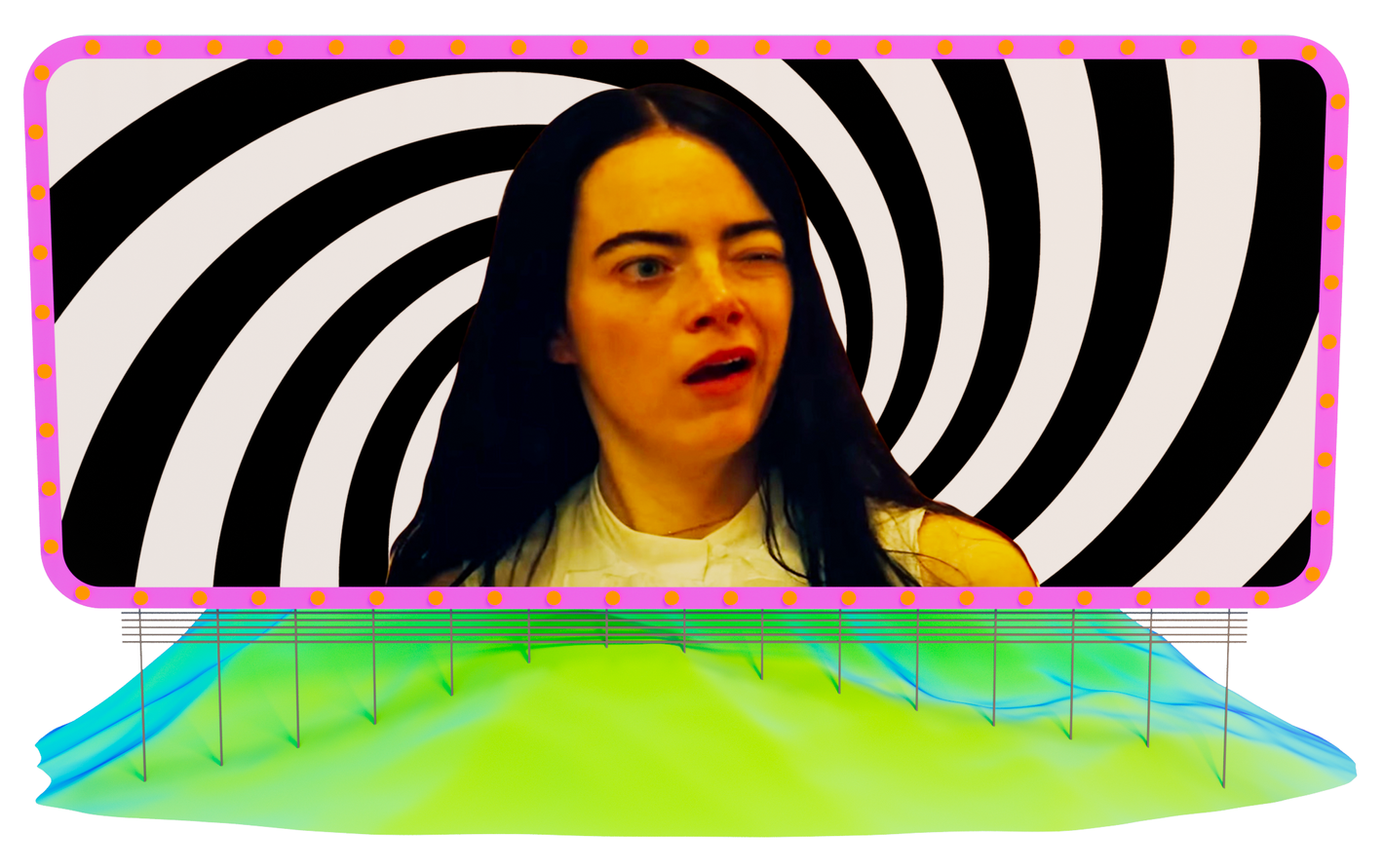
Say you want an Oscar. What kind of project will get you there? One school of thought says to play an important figure from history, perhaps one who struggled with illness or addiction, in a performance that requires at least five hours in the makeup chair.
That road map absolutely exists — just look at Oppenheimer, Nyad, or Rustin, all of which earned nominations for their stars this year. But as the Academy has expanded its membership over the past eight years, a different path has opened up. New voters are younger, more global, and more comfortable letting their freak flag fly. “Things that would’ve not been considered possible because they’re too risqué, that’s not the case anymore,” says one awards strategist. Increasingly, the offbeat passion projects are the Oscar movies.
Emma Stone won her first Oscar for La La Land, a nostalgic, retro-hued musical that was the most middle-of-the-road awards play you could draw up. Afterward, she seemed to have made a conscious choice to lend her star power to alienating auteurs like Yorgos Lanthimos, with whom she has made three movies and counting. The second was last year’s Poor Things, in which she spends significant chunks acting like a baby and/or totally nude and which won her a second Oscar. The season before saw three of the four acting trophies go to the stars of Everything Everywhere All at Once, a time-jumping sci-fi comedy in which butt plugs play a pivotal role. Of course, underneath their avant-garde trappings, both Poor Things and EEAAO turn out to hide universal messages about acceptance and empowerment. That’s the new Oscars model: quirky films that, as one agent puts it, are “still palatable but feel fresh to the older Academy.” —Nate Jones
… Or Play a Famous Musician
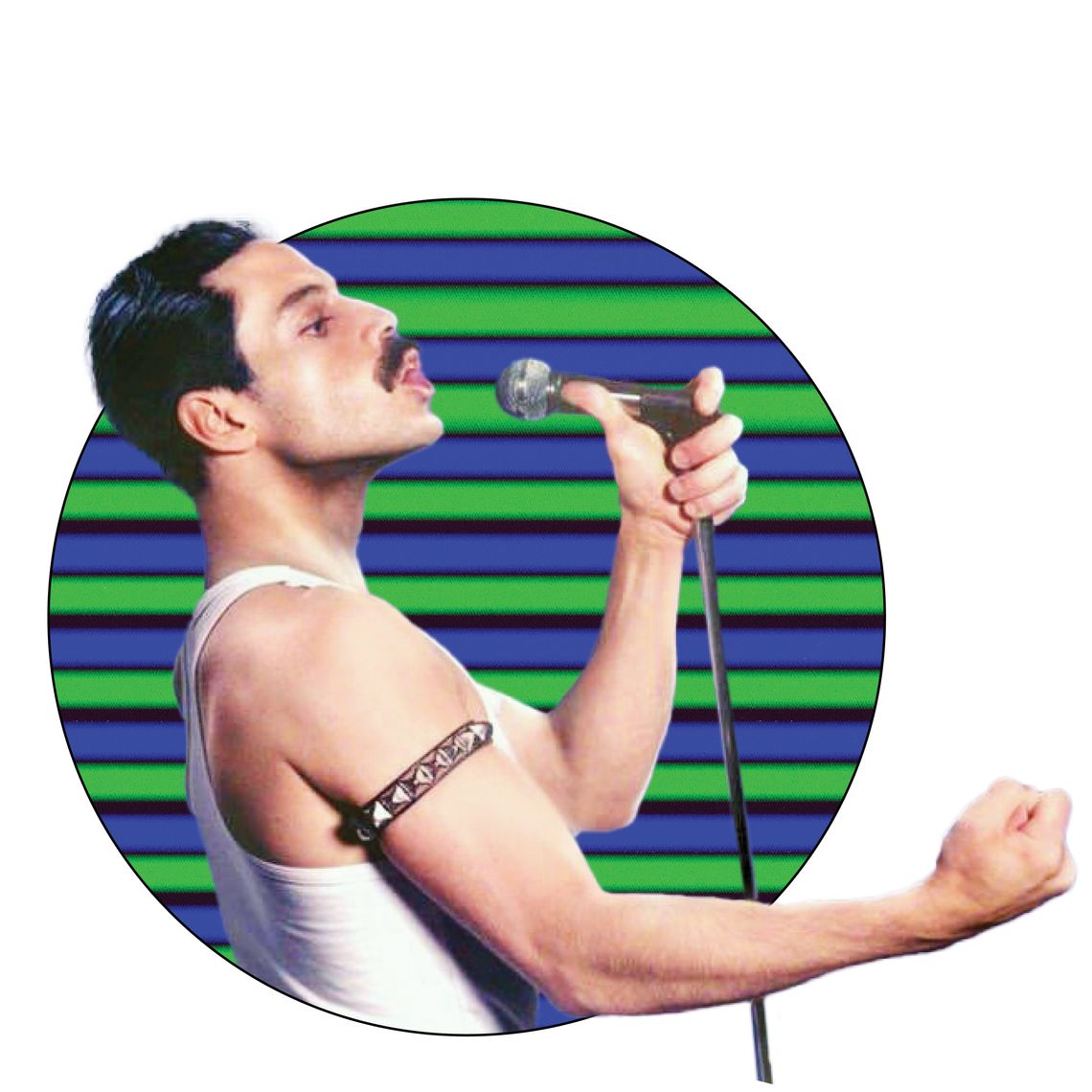
One genre of old-school Oscars bait remains a thriving commercial proposition: the musician biopic. 2018’s Bohemian Rhapsody won Rami Malek the Best Actor Oscar. Elvis earned a Best Picture nomination and catapulted Austin Butler onto the A-list. Bob Marley: One Love got terrible reviews, but that couldn’t stop it from grossing just shy of $180 million worldwide — not a bad résumé-builder for Kingsley Ben-Adir, who had never top-lined a movie before. The combination of a high box-office floor and the possibility of awards attention explains why so many stars are rushing to get biopics off the ground. Timothée Chalamet is shooting a Bob Dylan film, and Selena Gomez and Jeremy Allen White will play Linda Ronstadt and Bruce Springsteen. You’ll notice that most of these subjects are Boomer legends. Does the model still work for Millennial faves? Judging by the tepid response to the Amy Winehouse biopic Back to Black, starring Industry’s Marisa Abela, the answer is, No, no, no. —Nate Jones
Be Political (If Your Politics Don’t Offend the Studio Execs)
Over the past seven months, young stars have been forced to interpret an old rule: If you can’t say something nice about Israel, you shouldn’t say anything at all. As the Israeli military continues its assault on Gaza, killing more than 35,000 people and wounding nearly 80,000 others, stars are struggling to find the language. Everyone who was online during the 2020 BLM protests knows this in their bones — if you don’t express an opinion, you will be assigned one. (Or harassed in the comments till you speak.)
So they can’t just say nothing. But what can they say? If you’re Gal Gadot, it’s simple: organize a screening of an IDF film as she reportedly did in November. It’s more complicated for the less pro-Israel. The goal is to seem caring — about everyone. Engaged-ish but not strident. Saying cease-fire is acceptable so long as you mention the hostages. It’s safe to pray for “humanity.” It’s wonderful to wish for “peace.” “Protecting people” is always so important. It’s when you say which people need protecting that you run into trouble. For every Hunter Schafer — whose fans may love that she was arrested at an anti-Zionist protest — there are ten Zendayas posting a link to a fundraiser, then shutting the hell up. Fundraisers in general are a quiet way to participate, like the recent U.K.-based Cinema for Gaza auction; who could be mad at Josh O’Connor for donating a porridge-making tutorial? In 2020, celebs shared black squares; in 2024, they’re reposting Doctors Without Borders. Everyone wants to be Ayo Edebiri, whose signature on the Artists 4 Ceasefire letter — with its careful emphasis on both Israeli and Palestinian pain — didn’t stop her from winning an Emmy. No one wants to be Melissa Barrera, whose pro-Palestine posts brought her a different kind of fame: She’s best known as the actress who was fired from Scream 7. —Madeline Leung Coleman
Vulture Editors , 2024-05-23 13:00:36
Source link

